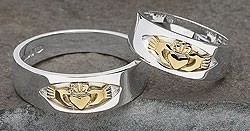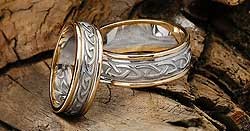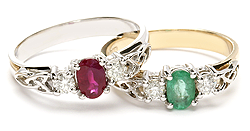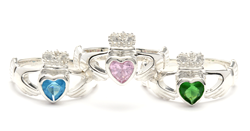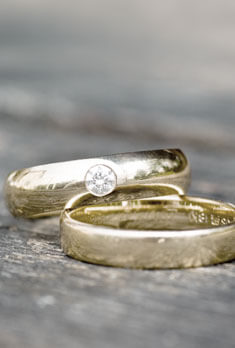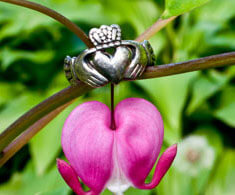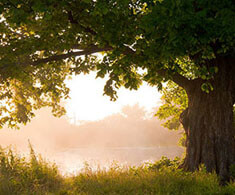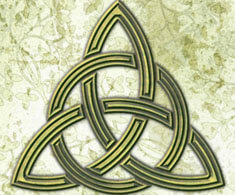Within two years they had arrived in Ireland from Norway with raids on Raithlin, Antrim and Lambay Islands, Dublin in 795. The Vikings wasted no time, destroying the monasteries of Iona, Inisbofin and Inismurray the same year.
Lightning Raids
During the early decades of Viking history in Ireland, Norse marauders did not stay in one place for very long. Instead, they preferred to attack a target quickly and disappear across the sea.
Given the nature of the attacks, it is likely that these initial raids were carried out by independent groups of Vikings rather than an organized collective.

The Vikings had a fierce and fearsome appearance made of metal, fur and horn.
The annals of history show that the Vikings never ventured more than 20 km from the island, preferring to hit vulnerable coastal targets.
It was a careful strategy that brought them much success although various groups of Vikings suffered defeats. A famous example of Irish warriors defeating Viking invaders occurred in 811 when the Ulaid annihilated their opponents.
Locha Leinand, King of Eoganacht and Men of Umail also had notable success in 812, but the Vikings were persistent and continued to batter the northern and eastern coasts of Ireland. They grew bolder in their attacks and raided the city of Armagh three times in 832.
Viking Settlements
This was the start of Viking expansion into Ireland and they established settlements at Lough Neagh in 840 and 841 before abandoning their blitzkrieg tactics soon after with further settlements at Cork, Dublin (Dubhilnn) and Waterford (Vadrefjord).
The Vikings are famous for plundering their monasteries and murdering their inhabitants, but their behavior was little different from that of the existing Irish tribes. The monasteries were wealthy and lacked defence, making them easy and obvious targets. The Vikings actually raided monasteries for cattle, provisions, and land. They also looted gems and metals, but that was not their only goal.
According to historical accounts, the Vikings and the ethnic Irish first managed to cooperate in 842, although it is quite possible that positive relations were established earlier. In 844, the Vikings had established a base at Lough Ree in order to quickly attack the surrounding countryside. These raids were not without incident since, according to the annals, Turgesius, an important Viking leader, was drowned by Mael Sechnaill, king of the Ui Neill.
Politics and Competition
Ironically, it is especially in Ireland that the Vikings are most vulnerable, because the kings of Ireland now had a place where they could attack and not be frustrated by an invisible enemy. The newly created Viking settlement of Cork was completely destroyed and Mael Sechnaill raided and sacked Dublin in 849.
To this day, rival Danish warriors raided Ireland and threatened Viking settlements. The Norse invaders therefore had no choice but to become more political and seek alliances with Irish tribes. Things looked ominous for the Vikings when Waterford was destroyed in 860 and six years later all the Norse long ports in northern Ireland were burned. In 902, Cerball mac Muirecain of Leinster and Mael Finnia mac Flannacain of Brega united to drive the Vikings out of Dublin.
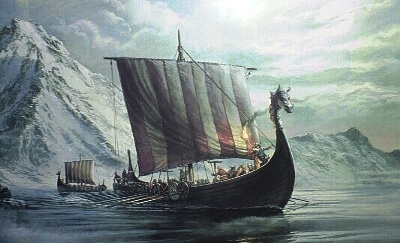
Viking longships could sail in shallow waters. They could thus go up the rivers and cross the sea.
Second Viking Age
The Vikings may have left their Irish settlements, but they continued to roam the Irish Sea and in 914 they returned to Waterford Harbor and rebuilt their settlements in Cork, Waterford, Dublin, Limerick and Wexford a decade after their return. In the 10th century, various unsuccessful attempts at expansion took place, unable to defeat the numerous Irish tribes.
At the end of the 10th century, Brian Boru emerged as a great ruler and in 1002; he became High King of Ireland. In 1014, the legendary Battle of Clontarf, where Boru was killed despite his army's victory, is often seen as the end of the Viking Wars. In reality, it was an internal battle for sovereignty between Boru and various tribal leaders. The Vikings were involved in the battle alongside Mael Morda of Leinster but were a minor political force long before Clontarf.
Consequences
This, however, spelled the end of any lingering Viking power in Ireland. A major mistake the Vikings made was to involve themselves in the dark world of Irish politics and encounter opposition from more quarters than they could imagine. The Vikings left an indelible mark on Irish history by establishing cities in Dublin, Cork and Waterford.
They also had a profound influence on the creation of weapons, jewelry, naval constructions as well as the development of new combat tactics. Many Vikings adopted Christianity, and intermarriage was also common. As a result, the Vikings who remained in Ireland assimilated into Irish culture while introducing elements of Norse culture that transformed the nation for generations to come.
Did you know?
The Vikings who came to Ireland from AD 795 to 840 were primarily from the country now known as Norway. The Danish Vikings arrived in Ireland around AD 849 and fought the Norse Vikings.


